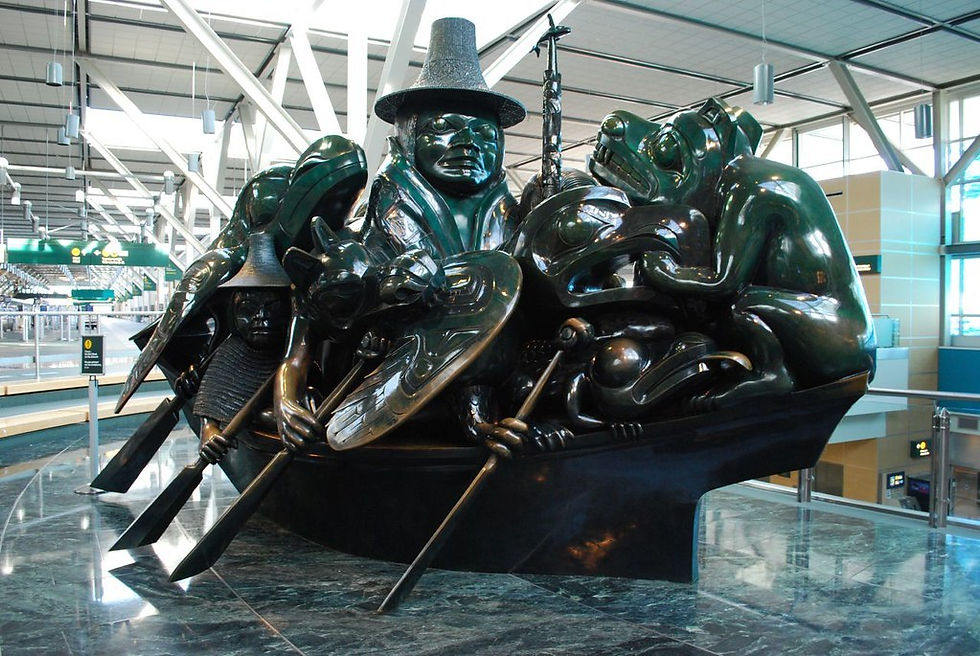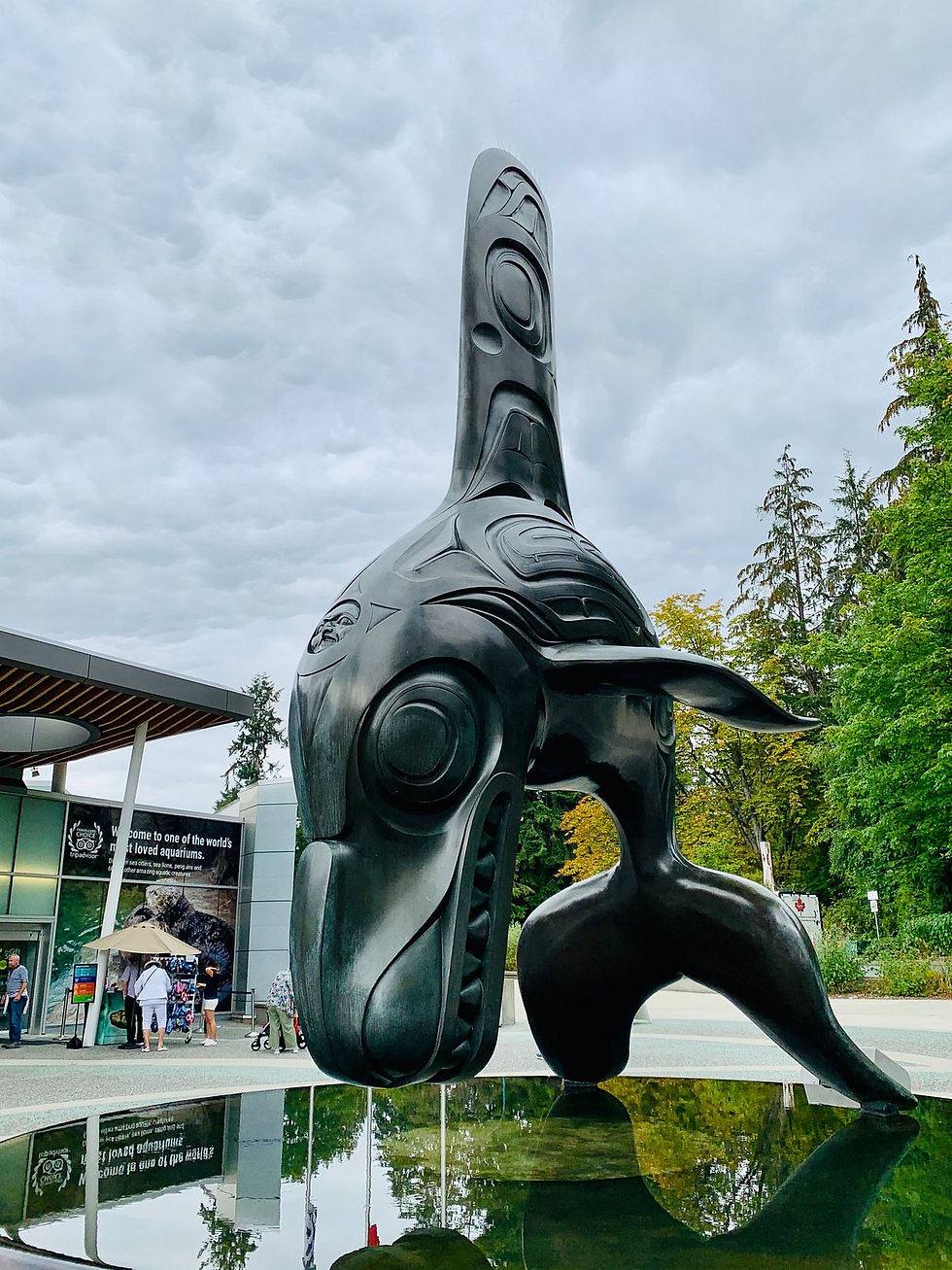Bill Reid: A Brief History of an Iconic Indigenous Artist
- Molly Kingsley
- Jan 27, 2024
- 2 min read
Updated: Mar 1, 2024
Article Written By: Molly Kingsley

Photo of Bill Reid at Work
Bill Reid is a name that every Canadian should know. Born in early 1920, Bill Reid began exploring his maternal roots of the Haida culture in his early adulthood after they had been kept from him for most of his childhood. This reconnection and fascination with his heritage would be a key factor in the development of his artistic career.
By contributing timeless works of art to international communities inspired by his Indigenous roots, Reid became one of the most renowned artists of his time. His art took Haida tradition and symbols and added a contemporary spin to them, capturing audiences and encouraging imagination. It was because of his art’s Indigenous roots that its exposure brought attention to both Haida and Northwest Coast Indigenous art, the source of inspiration for most of his work. Reid was a persuasive and expressive spokesperson for Indigenous rights; building and strengthening bridges between Indigenous peoples and others. Besides being a well-respected artist and advocate for Indigenous rights, Reid was also an important historical figure in the revitalization of Haida culture, which had been practically destroyed following the colonization of their homeland.
While Reid was foremost a jeweller, that did not stop him from expanding his horizons and broadening the circle of media and styles he used. In fact, some of his more famous works are not jewelry at all. A sculpture entitled “The Spirit of Haida Gwaii: The Jade Canoe” can be found at Vancouver International Airport. The sculpture depicts ten mythical beings, predominantly of Haida origin as well as three humans - the Bear Mother, the Chief and the “Ancient Reluctant Conscript”. In fact, this sculpture is also found at the Canadian Embassy in Washington, DC.

(Photo from: Art Canada Institute Website)
Another well-known piece of his work is the “Chief of the Undersea World” at the Vancouver Aquarium. Standing at five-and-a-half metres tall, the bronze orca whale greets all those who decide to pay our underwater friends a visit. While this project began in 1983, because of Reid’s deteriorating condition caused by Parkinson’s disease, it ended up being a joint effort. Reid originally carved the statue out of wood almost eighteen times smaller. A fellow Haida artist, Jim Hart, worked to refine Reid’s original sculpture and sculptor George Rammel, with the help of his assistant, worked to scale up the wood carving and recast it in clay and plaster.

(Photo from: Trip Advisor Website)
One last major work of Reid’s that may be recognizable to many is “Raven and the First Men” housed in UBC’s Museum of Anthropology. This four-and-a-half-ton cedar sculpture depicts the Haida legend of how humanity came to be. It is believed that the Raven found a clamshell holding several small beings. The Raven persuaded them to join him in the world and eventually the creatures’ curiosity overran their initial hesitation, becoming the first Haida.

(Photo From: CBC News Website)
Bill Reid was an exceedingly influential and inspiring artist and speaker. His journey, exploration of his heritage and the artistic career that followed, as a result, will forever be cemented in Canadian history.



Comments